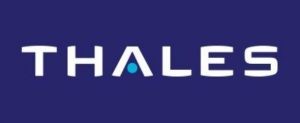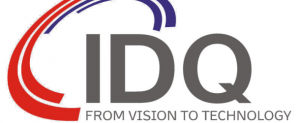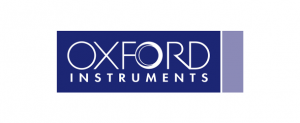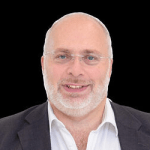Quantum News Briefs March 2: Thales pioneers Post Quantum Cryptography with a successful world-first pilot on phone calls, ID Quantique, KCS and SK Telecom release a new quantum enhanced cryptographic chip, Using quantum computers to make & manipulate music + MORE

Quantum News Briefs March 2:
Thales pioneers Post Quantum Cryptography with a successful world-first pilot on phone calls
 Thales recently announced it has successfully experimented end-to-end encrypted phone calls, tested to be resilient in the Post Quantum era. Quantum News Briefs summarizes below.
Thales recently announced it has successfully experimented end-to-end encrypted phone calls, tested to be resilient in the Post Quantum era. Quantum News Briefs summarizes below.
The pilot was performed with the Thales ‘Cryptosmart’ secure mobile app and 5G SIM cards installed in today’s commercial smartphones, testing a mobile-to-mobile call, voice/data encryption, and user authentication. The data exchanged during the call was set to be resistant to Post Quantum attacks thanks to a hybrid cryptography approach, combining pre-quantum and post-quantum defence mechanisms.
This first real-world quantum protected mobile solution, which combinesdThales’ ‘Cryptosmart‘ application and its 5G SIM, employs hybrid cryptography, as recommended by the NIST (National Institute of Standards and Technology). ‘CRYSTALS-Kyber’, one of the four algorithms selected by the NIST2, is the PQC algorithm natively implemented in the 5G SIM and used by Cryptosmart application to encrypt the communication.
Even if today’s quantum computer1 prototypes are still far from posing a threat to public key cryptography, it is critical to begin investigating resilient solutions. For example, there is a variant of “store now, decrypt later” attacks that consists in storing today’s exchanged data and messages in order to decrypt these messages once Quantum Computers are available. This means the majority of digital infrastructure security based on public key cryptography (PKC) may already be vulnerable to a quantum attack.
Such threats are relevant for scenarios involving highly sensitive information, such as classified information exchanged over an encrypted phone call. To address these threats, Thales created a proof of concept to test the scalability and quality of its solutions, which range from 5G SIM cards to secure communication software. Click here to read article in-entirety in Thales website.
ID Quantique, KCS and SK Telecom release a new quantum enhanced cryptographic chip
 SK Telecom and ID Quantique presented a new quantum-enhanced cryptographic chip co-developed with Korea Computer & Systems (KCS), a maker of IoT security cryptographic chips to secure IoT devices communication at this week’s Mobile World Congress in Barcelona.
SK Telecom and ID Quantique presented a new quantum-enhanced cryptographic chip co-developed with Korea Computer & Systems (KCS), a maker of IoT security cryptographic chips to secure IoT devices communication at this week’s Mobile World Congress in Barcelona.
This quantum-enhanced cryptographic chip is an ultra-compact and low-power chip that provides strong security functions to various IoT-based products and devices. Adding ID Quantique’s ultra-compact QRNG chip (IDQ250C3) to KCS’ crypto chip ensures trusted authentication and encryption of sensitive information and make our connected world more secure. The combination of these two chips into one chipset is more cost effective and a compact solution, allowing board size to be reduced by 20% thanks to a higher integration level, compared to the case of mounting two existing and separate chips on a board. In addition, the new chip is in the process of acquiring the highest level of security from the Korean National Intelligence Service’s KCMVP certification body. It targets the fast-growing security market with applications from national defense sectors to industrial and public sectors.
KCS, SK Telecom and IDQ have been collaborating for several years, bringing to the market a whole range of crypto chip-based solutions aiming at ensuring and enhancing IT security without compromising on performance and speed. Click here to read the February 28 Newswire announcement in-entirety.
Using quantum computers to make & manipulate music

Phillip Ball recently explained in Physics World how an avant-garde band of musicians and scientists are exploring how quantum computing can be used to make and manipulate music. Quantum News Briefs summarizes.
The effort is taking place at the Goethe-Institut, opposite Imperial College in London. A recent event included musicians like Peter Gabriel and Brian Eno, along with a number of quantum physicists. But the sounds emanating from its lecture theater were rather unexpected: drones, bleeps and bursts of wild beats more akin to the soundtrack of an experimental underground movie. This was, in fact, the sound of quantum computing.
Composers like Eduardo Miranda, University of Plymouth, are keen to discover what the new technology can offer them. “I want to develop machines that will help me be creative and will challenge my normal way of doing things,” he says.In one piece, participants were each using their own laptops, which were connected to a quantum computer over the Internet, to control – via hand gestures – the state of a quantum bit (qubit). When the state of the qubit was measured, the result dictated the characteristics of the sounds created by synthesizers back in London.
Quantum computing, Miranda believes, “promotes a different way of thinking, [which in turn] will lead to different ways of thinking about music.” It’s a view shared by Bob Coecke – another of Miranda’s collaborators – who is a physicist at the Oxford-based quantum computing company Quantinuum. “If you change the way you look at things, and the language you use, you come out with completely new ideas,” says Coecke.
Digital-information technology is now central to the production and reproduction of mainstream music. It was surely inevitable, then, that as quantum computers morphed over the last two decades from a theoretical proposal to real machines, musicians would be curious about what these devices might do for them. Click here to read complete February 28 article in Physics World.
Oxford Instruments & MagLab’s Applied Superconductivity Center partner on High-Temperature-
 Oxford Instruments, a leading provider of high-tech products and services to scientific research and applied quantum technology communities, has signed a licensing and sponsored research agreement National MagLab’s Applied Superconductivity Center (ASC) to explore magnet technology based on a Bismuth-based superconductor, Bi-2212.
Oxford Instruments, a leading provider of high-tech products and services to scientific research and applied quantum technology communities, has signed a licensing and sponsored research agreement National MagLab’s Applied Superconductivity Center (ASC) to explore magnet technology based on a Bismuth-based superconductor, Bi-2212.
“We started studying Bi-2212 in the 1990s and returned to it again around 2007 because of its unique geometry,” explains David Larbalestier, Ph.D. Marie Krafft Professor, Chief Materials Scientist of the National High Magnetic Field Laboratory & Professor of Mechanical Engineering at the FAMU-FSU College of Engineering. “In 2014, a discovery that the overpressure processing we had used for another bismuth-based conductor could be applied to Bi-2212 was game changing in yielding the kinds of critical current density that make this conductor’s applications very exciting.”
“The discovery and development of new quantum materials and their underlying physics is a significant underpinning of quantum technologies and the future green economy. Physicists need not only high magnetic fields, but the greater access, stability and uniformity that all-superconducting magnets bring. This is why today’s announcement is so important,” says Matt Martin, Senior Director of Engineering at Oxford Instruments NanoScience. “By combining the expertise and facilities developed at MagLab with Oxford Instruments’ proven track record manufacturing magnets for our customers around the world, the transition of the Bi-2212 technology from promising R&D through to a range of applications can now be realised.”
The agreements between Oxford Instruments and the MagLab’s ASC will not only result in research with commercial potential but also provide new training opportunities and prospective career paths for students and post-doctoral students studying Bi-2212. Click here to read complete March 1 announcement on Oxford Instruments’ site.
Sandra K. Helsel, Ph.D. has been researching and reporting on frontier technologies since 1990. She has her Ph.D. from the University of Arizona.



















